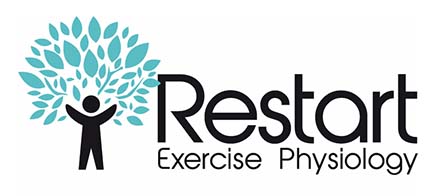For most of us, breathing is very much a subconscious action that we on the most part pay very little attention to. During exercise, or when putting in a quick sprint to chase the morning bus or evade a swooping magpie, the onset of breathlessness naturally occurs, which makes us aware of the need to regulate our breathing to satisfy the bodies demand for more oxygen. But did you know overbreathing not only negatively affects our ability to perform exercise optimally, but also contributes to many aliments including:
– Anxiety,
– Asthma,
– Insomnia,
– Heart problems,
– Fatigue and poor concentration,
– Obesity.
Are you an Overbreather?
Do any of the following questions sound familiar? If yes, you may be overbreathing…
– Do you sometimes breathe through your mouth during daily activities?
– Do you snore or hold your breath during sleep?
– Do you wake with a dry mouth in the morning?
– When you observe your breathing, do you see and feel movement from your chest, or from your abdomen?
– Do you regularly sigh or yawn throughout the day?
Why avoid Overbreathing?
The first step to overcoming chronic overbreathing is to make the change from mouth to nasal breathing. When breathing volume is too great, the natural tendency is to open your mouth to draw more air into the lungs. This is counterproductive however. The Oxygen Advantage, written by Patrick McKeown, states that habitual overbreathing leads to:
– A reduction in carbon dioxide in the blood (Hypocapnia),
– Impaired release of oxygen from the red blood cells,
– Mouth breathing and under-utilisation of the gas nitric oxide,
– Constriction of the smooth muscle in the blood vessels and airways,
– Reduced oxygenation of working muscles and organs, including the heart and brain,
– Increased acidity and fatigue during exercise,
– Negative effects to overall health.
Fortunately, the benefits of practicing nasal breathing, and additional nasal breathing exercises include:
– Easier breathing and reduced breathlessness during exercise,
– Naturally increased production of EPO (Erythropoietin) from the kidneys, and red blood cells from the spleen,
– Improved oxygenation of working muscles and organs,
– Reduction of lactic acid buildup and fatigue,
– Improved sleep and energy.
I’m on board! How can I stop overbreathing?
There are numerous ways to overcome overbreathing. As mentioned, the first of which is to make the switch from mouth breathing to nasal breathing. This will naturally promote a greater tolerance to carbon dioxide, which in turn allows for a greater exchange of oxygen into our working muscle cells. Nasal breathing also allows for greater uptake of nitric oxide, leading to the opening of blood vessels and improved oxygenation throughout the body. If you are a mouth breather, an effective way to facilitate the switch to nasal breathing is to place tape over the mouth, either during rest or during sleep, or both. Once you’ve made the switch to nasal breathing, your next goal is to reduce the volume of your inhalations and exhalations to an amplitude that is barely noticeable.
Diaphragmatic breathing exercises are another great way to reduce breathing volume and improve the quality of your breaths. It is also a great way to bring a sense of relaxation to the body, which will naturally reduce your breathing rate even further. A simple way to practice diaphragmatic breathing is to lie on your back with knees bent and feet flat, and place one hand just above your navel and one on your chest. Using nasal breathing only, as you breathe in gently guide your tummy outward. As you breathe out, gently draw your tummy in. Perform this for a few minutes to reset your breathing rhythm from shallow, chest breaths to deeper, diaphragmatic breaths. (Note: an appropriate progression to make is to add slight external pressure to your breathing, by placing either a hand or heavy book on to your tummy whilst breathing).

Diaphragmatic breathing – hand placement to help with technique, plus progression using heavy book for additional breathing resistance.
There are numerous breath-hold exercises that can be performed to further build your body’s tolerance to carbon dioxide and consequently improve both health and athletic performance. One that I have adapted into my own training as an AFL footballer is to perform breath-hold exercises whilst running on the treadmill. This is a more advanced exercise however, and should not be attempted before consulting both your GP and local Exercise Physiologist. Additionally, individuals with high blood pressure, cardiac conditions, Type 1 Diabetes, or any other serious health concern should not practice holding their breath either during rest or whilst exercising.
Happy breathing!
Luke
Reference
McKeown, P (2015). The oxygen advantage: simple, scientifically proven breathing technique to help you become healthier, slimmer, faster, and fitter. New York, NY: William Morrow & Company.

0 Comments